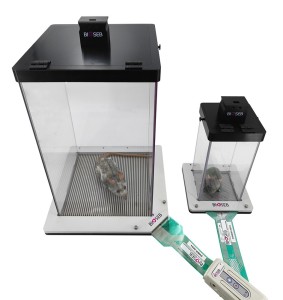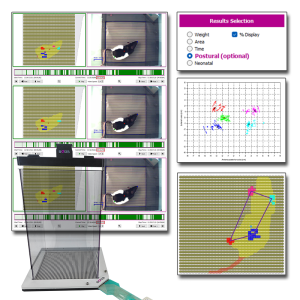Authors
D. L. Li, M.P. Johnson, J.D. Kennedy et al.
Lab
Eli Lilly and Co., Indianapolis, USA
Journal
Society for Neuroscience 2012
Abstract
The translational value of currently utilized animal pain models has been frequently debated ever since the clinical failure of the NK-1 antagonists. While there are a number of reasons underlying failed clinical trials, a concern often noted is that evoked endpoints in rodent pain models do not accurately reflect on-going (non-evoked) pain as is most often reported in the clinic. Here we compare standard evoked endpoint measurements, including thermal hyperalgesia (Hargreaves test) and mechanical hypersensitivity (Randall-Selitto test) to dynamic weight bearing using the BIOSEB automated system in the context of the Carrageenan model of acute inflammation. Dynamic weight bearing averages a series of measures over time, eliminating potential subjectivity associated with standard static weight bearing/incapacitance testing. Since this test does not involve a noxious stimulus, changes in the weight animals place on the injured paw may reflect the level of on-going pain. NSAIDs are standard-of-care drugs for mild/moderate inflammatory pain and as well are effective in reversing evoked pain endpoints in the Carrageenan model. Drug doses less than the minimally efficacy doses (MED) for reversing evoked thermal or mechanical hypersensitivity were able to reverse Carrageenan-induced weight bearing deficits. These doses/systemic exposure more closely match effective doses/systemic exposures used in the treatment of human inflammatory pain. The use of non-evoked pain model endpoints such as dynamic weight bearing can provide a valuable means for evaluating on-going pain as part of a comprehensive behavioral pain model screening paradigm.
BIOSEB Instruments Used
Dynamic Weight Bearing 2.0 (BIO-DWB-DUAL)
Source :

 Pain - Thermal Allodynia / Hyperalgesia
Pain - Thermal Allodynia / Hyperalgesia Pain - Spontaneous Pain - Postural Deficit
Pain - Spontaneous Pain - Postural Deficit Pain - Mechanical Allodynia / Hyperalgesia
Pain - Mechanical Allodynia / Hyperalgesia Learning/Memory - Attention - Addiction
Learning/Memory - Attention - Addiction Physiology & Respiratory Research
Physiology & Respiratory Research











![Dynamic Weight Bearing 2.0 – Postural Module [Add-on]](https://bioseb.com/733-home_default/dynamic-weight-bearing-20-add-on-postural-module.jpg)
























 Pain
Pain Central Nervous System (CNS)
Central Nervous System (CNS) Neurodegeneration
Neurodegeneration Sensory system
Sensory system Motor control
Motor control Mood Disorders
Mood Disorders Other disorders
Other disorders Muscular system
Muscular system Joints
Joints Metabolism
Metabolism Cross-disciplinary subjects
Cross-disciplinary subjects CONFERENCES & MEETINGS
CONFERENCES & MEETINGS 
